

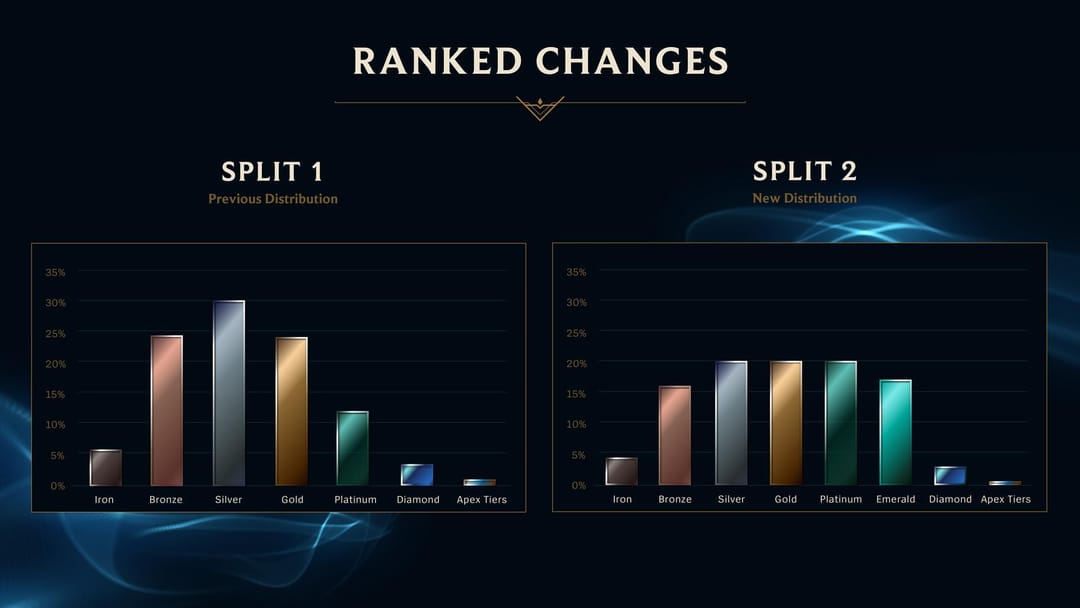
There are multiple game modes in League of Legends, but only the ranked mode (i.e., ranked solo/duo queue and ranked flex queue) gives League players ranks. League of Legends ranks aren't just badges of honour; they represent a player's journey, skillset, and dedication to the game.
For many, climbing the ranked ladder is a testament to their growth and mastery. Whether you're a casual player dipping your toes into ranked matches or an aspiring pro chasing the prestigious Challenger title, understanding different ranks and their distribution offers invaluable insights into where you stand and where you can go.

From the humble beginnings of the Iron rank to the revered echelons of Challenger rank, each tier in LoL is a new chapter in a player's gaming saga. Iron players are often those still learning the ropes, grasping champion mechanics, and map awareness.
As we ascend the League of Legends ranks — Bronze, Silver, Gold, and so forth — we see a marked increase in-game knowledge, strategy, and mechanical prowess. By the time a player reaches Challenger or Grandmaster, they are among the elite, participating in games that can often rival professional matches in terms of skill and intensity.
As LoL players ascend or descend through the ladder by playing ranked matches, understanding the global player distribution percentages can offer some much-needed perspective on one's journey.
Let's break down the overall solo queue rank distribution based on the latest available, updated data for League of Legends Season 15:
Data updated: February 2025.
Iron: Representing the foundation from which every player can build their skills, Iron holds around 8.1% of the global player base. It's where beginners get their first taste of ranked competition and start understanding the game's intricacies.
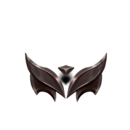
Bronze: Climbing a step higher, the Bronze tier encompasses 18% of players. Here, competitors begin to sharpen their strategies and champion mastery while contending with diverse skill levels.

Silver: Often referred to as the game's median, the Silver rank holds 17% of all players. It's a significant milestone for many, signalling they're advancing beyond the basics and demonstrating a firmer grasp of game mechanics.

Gold: Holding approximately 19% of players, Gold rank is where one encounters more seasoned competitors. With refined strategies and more consistent plays, it's a rank that many aspire to achieve and maintain.
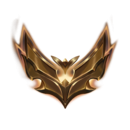
Platinum: Scaling further up, Platinum players, making up about 18% of the base, showcase an adept understanding of macro and micro gameplay elements. They're often deeply engaged with the game, keeping up with meta shifts and experimenting with advanced tactics.
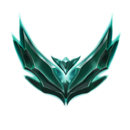
Emerald: The recent addition of the Emerald rank to the League of Legends tier system serves as a bridge between the elite and the aspiring. Encompassing around 13% of players, this rank is a testament to those who have surpassed the Platinum tier but are still honing their skills for the higher echelons of Diamond and beyond. Players in this rank exhibit a balance of advanced tactical understanding and refined mechanical prowess, marking them as formidable opponents on the Summoner's Rift.

Diamond: Home to roughly 4% of players, the Diamond rank in the game is where the elite start to shine. Achieving this rank means a player is in the top echelon globally, demonstrating exceptional skills and game knowledge.

Master: Housing only about 0.64% of players, the Master rank is a testament to dedication, skill, and often, teamwork. Players here have a deep understanding of game nuances, often spending hours analyzing plays and refining strategies.

Grandmaster: Occupied by just 0.051% of the player base, Grandmaster is where the crème de la crème reside. To stay in this rank requires consistent high-level performance and an intricate understanding of every game facet.

Challenger: The highest rank in League, Challenger is reserved for the absolute best, housing a mere 0.021% of players globally. Achieving this rank isn't just about skill but also about dedication, strategy, and, sometimes, a touch of genius.
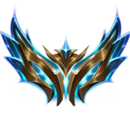
While the journey through these tier and division is unique for everyone, knowing the rank distribution in League of Legends can inspire, motivate, and drive players to reach even loftier heights.
League of Legends ranked system used to be bottom-heavy. More than 60% of the players were either in Bronze or Silver. These ranks are where you'd find a lot of the player base, and Silver is the usual starting point and a place many consider average. Gold and Platinum ranks were less populated, representing the more skilled players who had moved past the average.
Recently, the goalposts have moved. The average League player is now hitting Gold, making it the new norm. The ranks are becoming more balanced – it's not just a few at the top anymore, and the crowd at the bottom is thinning out.
To preserve the value of higher ranks while accommodating this shift, Riot Games introduced a new rank: Emerald. Nestled between Platinum and Diamond, Emerald creates a buffer zone that maintains the prestige of being a Diamond player or above. It's like an added rung on the ladder that gives players a new milestone to reach without overcrowding the top.

Understanding the LP system is crucial for any player invested in climbing the rating system in League of Legends. LP determines a player's progression within their current rank and when they are promoted to the next rank or demoted to a lower one. Let's demystify this pivotal aspect of the ranking system:
Behind the scenes, League of Legends uses a system known as MMR to determine the skill level of each player. Although hidden from direct view, MMR significantly influences LP gains and losses.
Players in the highest ranks (Diamond, Master, Grandmaster, and Challenger) must be wary of LP decay. If they don't participate in ranked games for an extended period, their LP will gradually decrease, potentially resulting in demotion.
Players can partner with a friend to queue for ranked games. However, this duo must be within a certain rank range of each other. While duo queuing can offer synergistic advantages, it may also match the duo against tougher opponents, potentially affecting LP gains and losses.
By understanding the mechanics behind LP, players can make more informed decisions on their journey through the ranks. It's not just about winning or losing but about consistent performance, understanding the system, and continuous self-improvement.
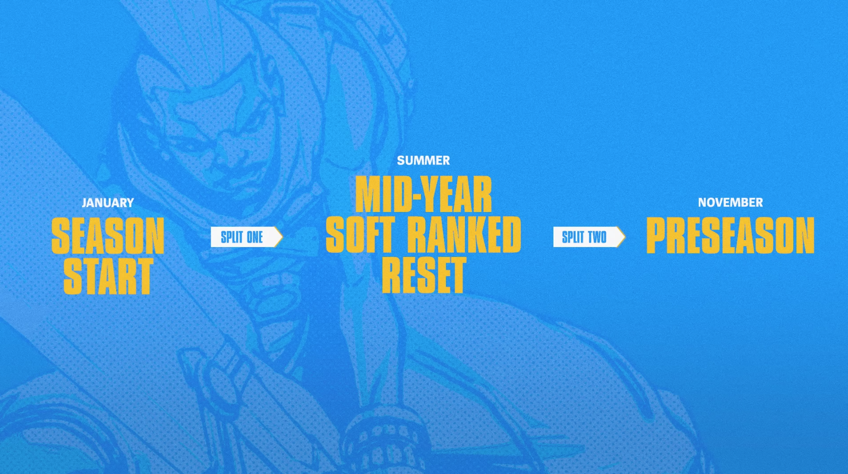
League of Legends players eagerly (or anxiously) await the seasonal rank reset each year. This defining moment signals the commencement of a new ranked season and offers everyone a clean slate.
While the word 'reset' might seem like everything from the previous season gets erased, the process is more nuanced than that. Let's break down what exactly happens during this period and how it affects your journey on the Summoner's Rift:
Riot Games usually opts for a "soft reset" rather than a "hard reset."
A hard reset would mean every player, regardless of their previous rank, starts from the very beginning.
A soft reset, on the other hand, mildly adjusts each player's Matchmaking Rating (MMR) towards a baseline, considering their previous season's MMR.
A player with a higher MMR from the previous season will still start the new season at a relatively higher point than someone with a lower MMR.
At the onset of the new season, players must first complete a set of five placement matches. These games determine the player's starting rank in the new season.
While the outcome of these matches is vital, the player's MMR at the end of the previous season also weighs in. So, even if a player had a less-than-ideal placement performance, their past achievements could still land them a decent rank.
However, it's common for players to find themselves placed in a slightly lower rank than where they finished the previous season. This intentional design encourages progression and climbing throughout the new season.
At the end of each season, players receive rewards based on their achieved rank.
These can include profile banners, icons, and even exclusive skins.
The rank displayed in a player's profile gets updated to reflect their final standing from the last season, and a fresh badge indicating the new season is added.
The seasonal rank reset serves multiple purposes. Firstly, it introduces new gameplay changes, meta shifts, and sometimes even new champions or game modes to the ranked environment, ensuring players adapt and grow. Secondly, it offers a sense of renewed competition.
Players get motivated to climb, re-establish their standing, or even aim higher by nudging everyone a bit closer in rank. Lastly, it's a mechanism to correct any MMR inflation or other inconsistencies that might have developed over the course of the previous season.
With the reset comes new challenges. Meta shifts, champion updates, and sometimes entire game mechanic overhauls can throw players off their game. It's essential to understand these changes, practice in unranked modes, and collaborate with the community to adapt and evolve.
The seasonal rank reset isn't just about starting anew. It's a recalibration, a rekindling of competitive spirit, and an invitation to grow, adapt, and rise to new challenges in the Summoner's Rift.
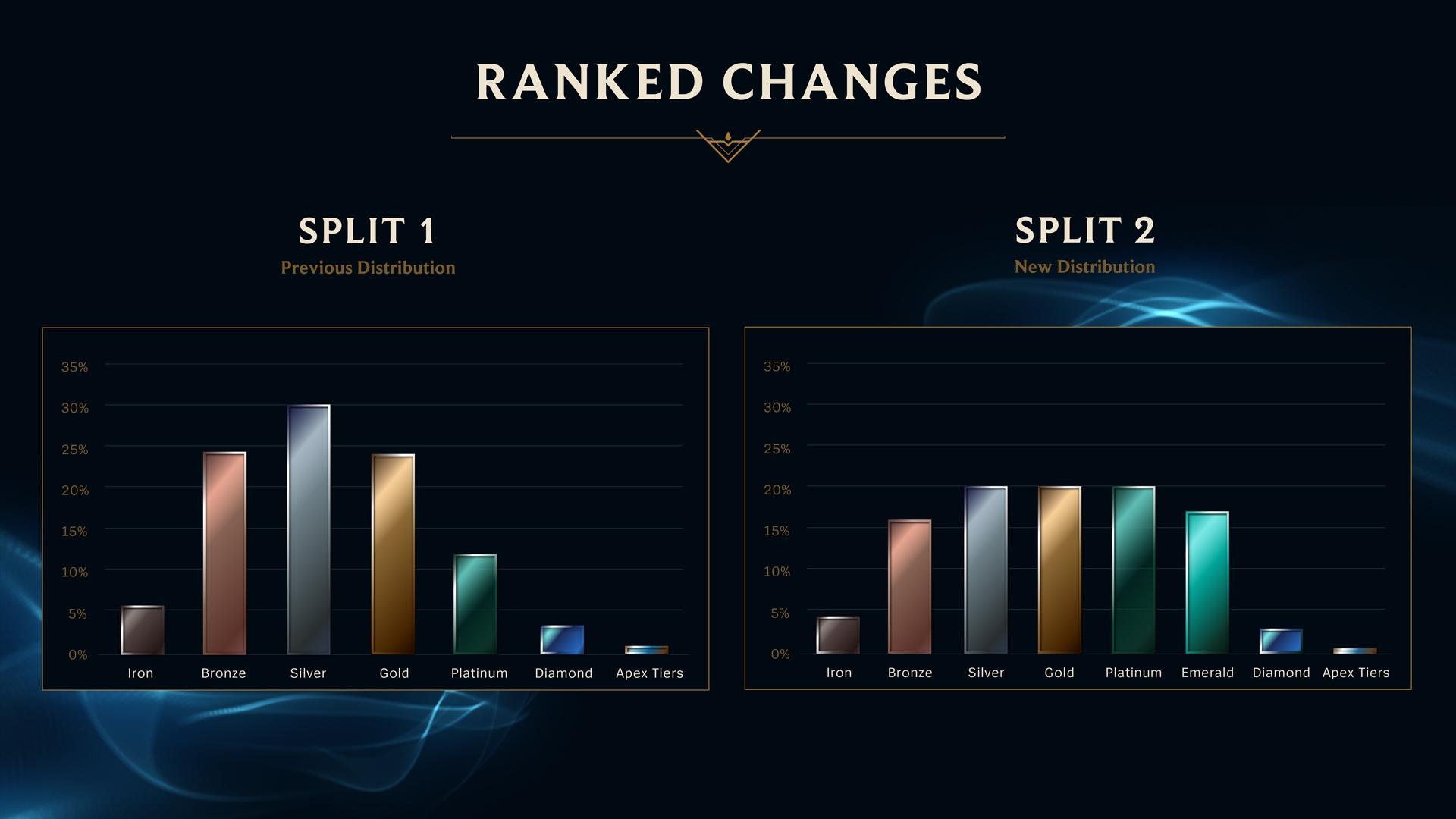
League of Legends ranked seasons are no longer monolithic stretches of time where players grind out ranked queues to achieve their desired ranks. Instead, Riot Games introduced the concept of "Splits" within a single ranked season, aiming to maintain player engagement, introduce mid-season adjustments, and offer additional rewards. Let's delve into the intricacies of these splits:
A ranked season in League of Legends is typically divided into three splits. Each split spans a few months, breaking the year-long season into manageable chunks.
Re-Engagement: Players are encouraged to engage with the game continuously by segmenting the year into splits. A new split can be a fresh incentive to play, especially for those who may have been dormant or less active.
Adaptable Gameplay: Splits often coincide with significant balance patches or meta changes. By introducing these at the beginning of a split, Riot ensures the ranked environment stays dynamic and evolves throughout the year.
Feedback and Adjustments: Each split's end provides Riot with a natural point to gather feedback and make any necessary changes, be it game mechanics, champion balances, or ranked system tweaks.
At the end of each split, players receive rewards based on their performance and engagement during that split. These can range from cosmetic items, such as icons or emotes, to in-game currency.
Riot introduced the concept of "Split Points," which players accumulate by winning games during the split.
Earning a certain number of split points rewards players with exclusive cosmetics. Players can collect a complete set of these themed rewards by participating in all splits.
It's essential to note that while a new split begins, your MMR and rank do not reset. Instead, the splits within a season offer renewed opportunities for rewards and engagements without affecting your rank progression.However, there's typically a soft MMR adjustment at the beginning of a new season, not between splits.
Along with introducing splits, Riot Games streamlined the rank progression experience. The promotional series between divisions within the same tier was removed. The change was made to ensure a smoother climb and reduce the stress associated with these mini-milestones, making the journey within each split more enjoyable.
As the game evolves, so does its ranked system. While Splits introduced a more layered approach to the competitive year, they also brought more frequent rewards and opportunities for players to engage. Adjusting to this rhythm requires understanding the purpose behind each split, capitalizing on the rewards, and staying updated with the periodic changes introduced.
Rank distributions aren't static. They shift with game mechanics, meta changes, and even the introduction of new champions. Each season brings a fresh start, and changes that can influence which ranks players land in.
A major meta shift can alter the dominant playstyles, affecting players' win rates and their ranks. For instance, if tanks become the meta, players proficient with tank champions or strategies can see a favourable climb, while others might need to adapt quickly or face a descent.
Every player has their own story. Some might experience a meteoric rise, swiftly climbing ranks, while others might find themselves plateauing in Gold for multiple seasons.
This stagnation can be attributed to several factors: they may need to adapt to meta changes, they may face challenges in teamwork or communication, or they may struggle with game mechanics. Recognizing these bottlenecks is the first step towards breaking through them.
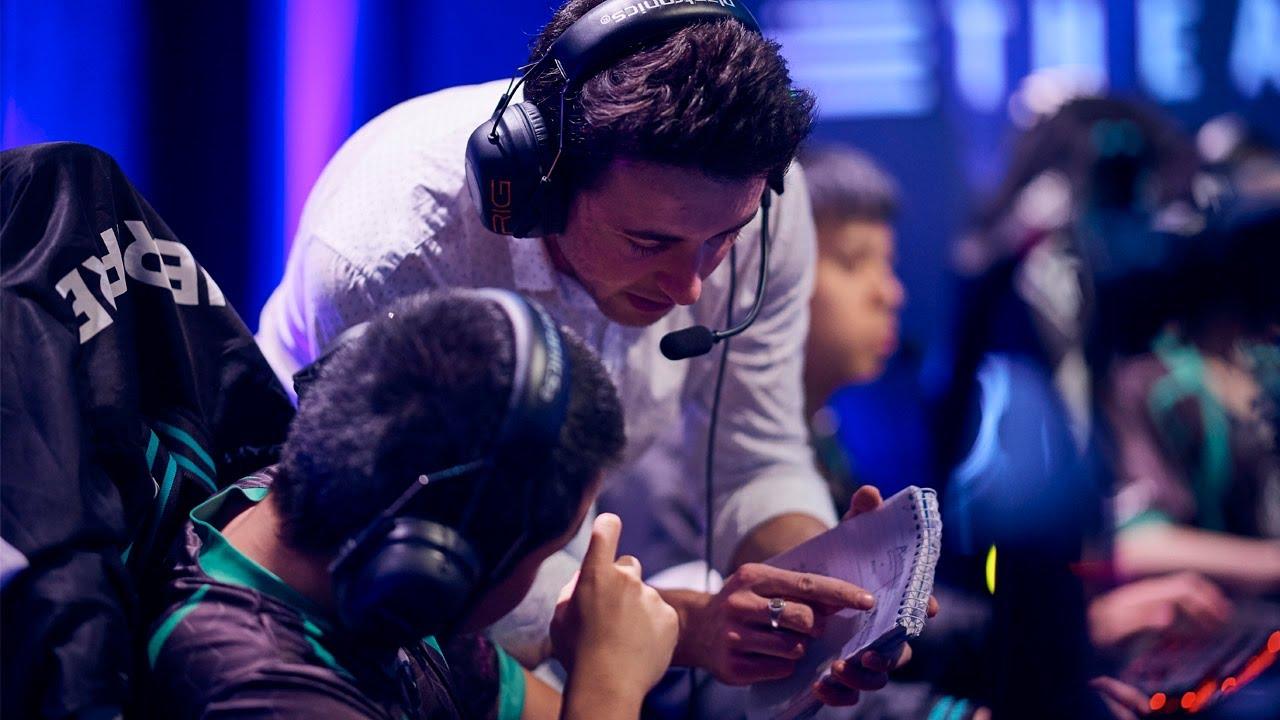
League of Legends coaching from WeCoach can offer tailored advice, highlight strengths, and help iron out weaknesses. They provide an external, expert perspective, and their impact can often be game-changing. Whether refining your champion pool, enhancing macro strategy, or improving last-hitting, a good coach can provide the edge needed to climb.
Peering into the crystal ball, as the LoL community grows and the game continues to evolve, rank distributions will undeniably see shifts. New regions might emerge as powerhouses, meta changes could disrupt current distributions, and innovations in coaching and training might level up the average player's skills. One thing's for sure: The League world will remain dynamic, challenging, and ever-engaging.
League of Legends isn't just a game; for many, it's a passion, a challenge, and a community. Understanding the ranked system in League and the rank distributions isn't about bragging rights; it's about recognizing where you stand, setting goals, and charting your unique journey in this vast gaming universe. So, whether you're an Iron player aiming for Silver or a Diamond player with sights set on Master, remember: every rank has its lessons, challenges, and moments of glory. Embrace them all.